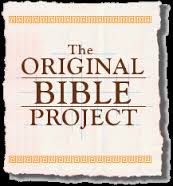Colines Greek Testament, 1534
Η ΚΑΙΝΗ ΔΙΑΘΗΚΗ. Paris: Simon de Colines. 1534. Octavo.
Simon de Colines was a Parisian scholar and printer, the step-father of Robert Estienne. The Greek Testament that he printed in 1534 was the first effort at a critical Greek text of the New Testament. It was based partly on the Complutensian polyglot and partly on Erasmus’ third edition of 1522. But he also used some manuscripts, as evidenced by at least 52 readings not found in the earlier texts.
Many of the unique readings Simon adopted were regarded as significant by later scholars. However, his text did not strongly influence subsequent editions. For example, he omitted the comma Johanneum (I John 5:7-8), while every Greek Testament over the next two centuries included it.
Simon began a tradition of biblical scholarship and publication that his step-son and grandson carried on under the famous Estienne imprint.
The pictured copy is opened to James 5.
Luther Bible, 1545
Biblia, Dat ys: De gantze Hillige Schrifft. Magdeburg: H. Walther, 1545. Folio.
This 1545 Bible in Low German is Luther’s final revision of the High German Bible that he first published in 1534. It is one of only six known copies in the world.
Although Luther wrote voluminously, his Bible translation stands as his greatest and most influential achievement. Eighteen German translations had appeared earlier, but his superb translation gained instant popularity and has been kept in print down to the present day. Its vocabulary and style helped to stabilize the German language in the sixteen century.
“Luther gave Scripture a completely new status in theological thought and Church practice—asserting the sole authority of Scripture (sola scriptura) and the ability of the laity to read the Bible and distinguish between revealed truth and the distorted practice of the ‘Ancient Church’—and provided a new German version of the Bible that drew on the original texts with innovative freshness, thus ensuring that his translation enjoyed unprecedented fame.” (Stephan Füssel, 2003).
The pictured copy is open at Isaiah 1, where a woodcut depicts the Lord on his throne surrounded by seraphim.



